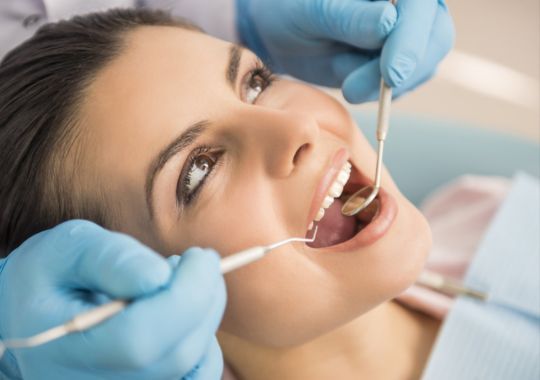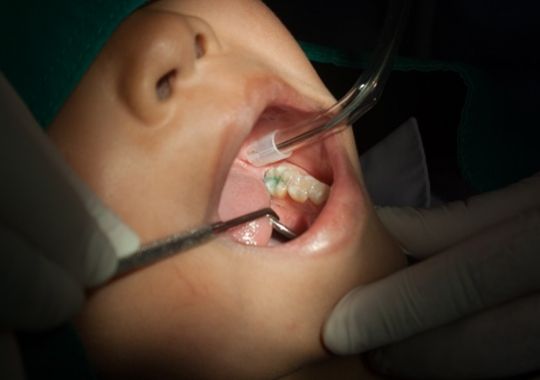Temporary fillings play a crucial role in dental care, providing a protective barrier for damaged teeth until permanent restorations can be placed. If you have a temporary filling, you may wonder whether it is safe to brush around it. In this article, we will explore the topic of brushing a temporary filling and discuss the importance of oral care in maintaining the health and longevity of temporary fillings.
As Amazon affiliates we may earn a commission if you purchase a product at no cost to you.

Watch this educative video.
Can You Brush a Temporary Filling?
Brushing a temporary filling is not only safe but also essential for maintaining proper oral hygiene. Let's explore the importance of proper oral care and discuss the recommended brushing techniques for temporary fillings.
The Importance of Proper Oral Hygiene
Proper oral hygiene is crucial for maintaining the health of your teeth and gums, including areas with temporary fillings. Here's why it matters:
Plaque removal: Brushing helps remove plaque, a sticky film of bacteria that forms on your teeth. If plaque is not removed regularly, it can lead to tooth decay, gum disease, and potential complications around the temporary filling.
Preventing gum inflammation: Good oral hygiene helps prevent gum inflammation, also known as gingivitis. Gingivitis can affect the gum tissue surrounding the temporary filling and potentially compromise its integrity.
Freshening your breath: Brushing your teeth regularly helps eliminate bacteria that can cause bad breath, giving you a fresher breath and improved oral hygiene.
Maintaining proper oral hygiene is essential for the overall health and longevity of your teeth, including those with temporary fillings.
Brushing Techniques for Temporary Fillings
When brushing a tooth with a temporary filling, it's important to use gentle brushing techniques to avoid dislodging or damaging the filling. Here are some tips to follow:
Choose a soft-bristled toothbrush: Opt for a toothbrush with soft bristles to ensure gentle brushing without causing any harm to the temporary filling. Soft bristles effectively remove plaque and debris without being overly abrasive.
Angle your brush: Hold your toothbrush at a 45-degree angle to your gumline. Gently brush in small circular motions, covering all tooth surfaces, including the area with the temporary filling.
Apply light pressure: Avoid applying excessive force when brushing around the temporary filling. Gentle pressure is sufficient to clean the tooth's surface without risking damage to the filling.
Pay attention to the filling area: Be mindful of the filling area while brushing. Take care to clean around the edges of the filling, ensuring that no food particles or plaque accumulate in that area.
Remember to brush your teeth at least twice a day, ideally after meals, to maintain optimal oral hygiene. Regular brushing, along with proper flossing and rinsing, helps keep your entire mouth clean and promotes the health of your temporary filling.

When and How to Brush a Temporary Filling
Maintaining a proper brushing routine is essential for the health of your teeth, including those with temporary fillings. Let's explore the recommended brushing frequency and timing, as well as the importance of choosing the right toothbrush and toothpaste for brushing a temporary filling.
Brushing Frequency and Timing
To maintain optimal oral hygiene, it is generally recommended to brush your teeth at least twice a day. However, when you have a temporary filling, it is beneficial to consider the following:
After meals: Brushing your teeth after meals helps remove food particles and plaque that may accumulate around the temporary filling. This practice reduces the risk of bacteria buildup and potential complications.
Be mindful of timing: If you have recently had a temporary filling placed, it is important to wait for a few hours before brushing the area. This allows the temporary filling to properly set and ensures that brushing won't dislodge it.
Remember to brush gently around the temporary filling, using small circular motions to clean the tooth's surface without putting excessive pressure on the filling. Take care to cover all tooth surfaces, including the area with the temporary filling.
Choosing the Right Toothbrush and Toothpaste
When brushing a temporary filling, it is important to select the right toothbrush and toothpaste. Here are some considerations:
Soft-bristled toothbrush: Opt for a toothbrush with soft bristles to ensure gentle cleaning without causing any damage to the temporary filling. Soft bristles are effective in removing plaque and debris without being harsh on the filling or surrounding area.
Non-abrasive toothpaste: Choose a non-abrasive toothpaste that is gentle on the teeth and temporary filling. Look for toothpaste with fluoride, as it helps strengthen the tooth enamel and provides added protection against tooth decay.
Avoid using toothbrushes with hard bristles or abrasive toothpaste, as they can potentially wear down the temporary filling or cause damage to the surrounding tooth structure. It's important to replace your toothbrush regularly, approximately every three to four months, or sooner if the bristles become frayed.
By choosing the right toothbrush and toothpaste and adopting proper brushing techniques, you can effectively clean your teeth, including the area with the temporary filling, while maintaining their integrity.
Tips for Brushing with a Temporary Filling
When brushing with a temporary filling, it's important to adopt a gentle brushing technique and pay attention to the filling area. Here are some tips to ensure proper oral care while maintaining the integrity of your temporary filling:
Gentle Brushing Technique
Brushing gently is key to avoid dislodging or damaging the temporary filling. Follow these tips for a gentle brushing technique:
- Use light pressure: Apply gentle, even pressure when brushing the teeth with a temporary filling. Avoid using excessive force that may cause the filling to become loose or dislodged.
- Small circular motions: Use small circular motions to clean the tooth surfaces, including the area with the temporary filling. This technique allows for thorough cleaning while minimizing the risk of damaging the filling.
- Take your time: Be patient and spend an adequate amount of time brushing your teeth. Rushing through the process may lead to ineffective cleaning or unintentional pressure on the temporary filling.
Avoiding Excessive Pressure
Avoid applying excessive pressure when brushing around the temporary filling. Too much force can dislodge or damage the filling, compromising its effectiveness. Keep these points in mind:
- Let the bristles do the work: Allow the bristles of the toothbrush to gently glide over the tooth surfaces. Avoid pressing too hard or scrubbing aggressively, as this can harm the filling and surrounding tooth structure.
- Focus on technique, not force: Focus on using proper brushing technique rather than relying on excessive pressure. Proper technique ensures thorough cleaning while minimizing the risk of causing harm to the filling.
Paying Attention to the Filling Area
While brushing, pay close attention to the area with the temporary filling. Take these steps to ensure proper cleaning:
- Clean along the edges: Pay special attention to the edges of the temporary filling, as this is where plaque and food particles can accumulate. Gently brush along the edges to remove any buildup.
- Be thorough but cautious: Clean the entire tooth surface, including the filling area, without putting excessive pressure. Be thorough in your cleaning efforts, but be cautious to avoid any unnecessary strain on the filling.
Remember, a gentle approach is key when brushing with a temporary filling. By adopting a gentle brushing technique, avoiding excessive pressure, and paying attention to the filling area, you can effectively maintain oral hygiene while preserving the integrity of the temporary filling.
What Toothbrush and Toothpaste to Use with a Temporary Filling?
Choosing the right toothbrush and toothpaste is important when you have a temporary filling Here are the recommended options for optimal oral care:
Soft-Bristled Toothbrush
Opting for a soft-bristled toothbrush is essential when brushing with a temporary filling. Here's why:
- Gentle cleaning: Soft bristles are gentle on your teeth and gums, reducing the risk of damaging the temporary filling or causing irritation to the surrounding area.
- Effective plaque removal: Soft bristles are effective in removing plaque and debris from your teeth, including the area around the temporary filling, without causing unnecessary friction or pressure.
When selecting a toothbrush, look for one with soft bristles and a size and shape that comfortably fits your mouth. Replace your toothbrush every three to four months or sooner if the bristles become frayed or worn.
Non-Abrasive Toothpaste
Using non-abrasive toothpaste is important for maintaining the integrity of the temporary filling. Here's what to consider:
- Avoid abrasive ingredients: Choose a toothpaste that does not contain abrasive ingredients, such as harsh whitening agents or baking soda. These can potentially wear down the temporary filling or cause damage to the surrounding tooth structure.
- Look for fluoride: Opt for a toothpaste that contains fluoride, as it helps strengthen tooth enamel and provides added protection against tooth decay.
By using non-abrasive toothpaste, you can effectively clean your teeth, including the area with the temporary filling, while minimizing the risk of causing harm to the filling or surrounding teeth.
It's also important to follow the instructions provided with your toothpaste regarding the appropriate amount to use for each brushing session.
Maintaining good oral hygiene, including proper brushing with a soft-bristled toothbrush and non-abrasive toothpaste, helps ensure the health and longevity of your temporary filling.

.
Cautions and Precautions for Brushing a Temporary Filling
While it is important to maintain proper oral care with a temporary filling certain precautions should be taken to avoid any damage or dislodgment of the filling. Here are some cautions and precautions to keep in mind when brushing:
Avoiding Harsh Scrubbing
One of the most important cautions is to avoid harsh scrubbing when brushing a tooth with a temporary filling. Scrubbing too vigorously can put excessive pressure on the filling and may cause it to become loose or dislodged. Instead, adopt a gentle brushing technique, using small circular motions with a soft-bristled toothbrush.
Rinsing and Spitting Carefully
Be mindful of how you rinse and spit after brushing with a temporary filling. Here's what to consider:
- Gentle rinsing: Rinse your mouth gently with water or mouthwash to remove any toothpaste residue or debris. Avoid swishing vigorously, as this can create strong forces that may dislodge the filling.
- Careful spitting: When spitting out the water or mouthwash, do so with care. Spit slowly and ensure that you don't create a forceful flow that could potentially displace the temporary filling.
By rinsing and spitting carefully, you can minimize the risk of accidentally dislodging the filling while maintaining proper oral hygiene.
Being Mindful of Dislodgment
It is essential to be mindful of any signs of dislodgment or movement of the temporary filling. If you notice that the filling feels loose, detached, or uncomfortable while brushing, it is important to seek dental attention promptly. Your dentist can evaluate the filling and provide necessary adjustments or replacements, if needed.
If you experience any unusual pain, sensitivity, or discomfort around the temporary filling while brushing, contact your dentist for further guidance.
By being cautious and attentive during brushing, you can minimize the risks associated with dislodging or damaging the temporary filling.
Conclusion
Maintaining good oral hygiene with temporary fillings not only promotes the health and longevity of the filling but also contributes to overall oral health. Remember to follow your dentist's recommendations, practice regular brushing and flossing, and seek professional dental care when needed. Keep up with proper oral care, and your temporary filling will serve its purpose effectively until a permanent restoration can be placed.
Recommended Article

Frequently Asked Questions FAQs
Can I brush and floss around a temporary filling?
Yes, it is important to brush and floss around a temporary filling to maintain good oral hygiene. Use a soft-bristled toothbrush and gentle flossing techniques to avoid dislodging or damaging the filling.
How often should I brush and floss with a temporary filling?
It is recommended to brush your teeth at least twice a day and floss once a day, including the area with the temporary filling. Regular brushing and flossing help remove plaque and debris, promoting the health of your teeth and the longevity of the filling.
What precautions should I take when brushing and flossing with a temporary fillings
When brushing and flossing, avoid harsh scrubbing, excessive pressure, and forceful movements that may dislodge the filling. Be mindful of the filling area, use gentle techniques, and follow proper oral care guidelines to ensure the success of your temporary filling.











